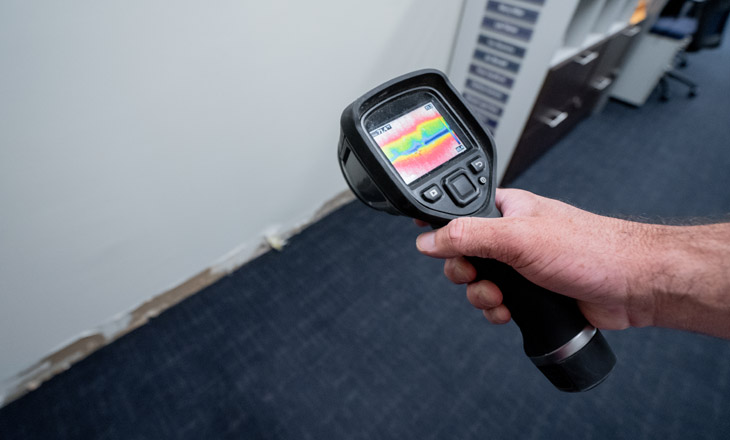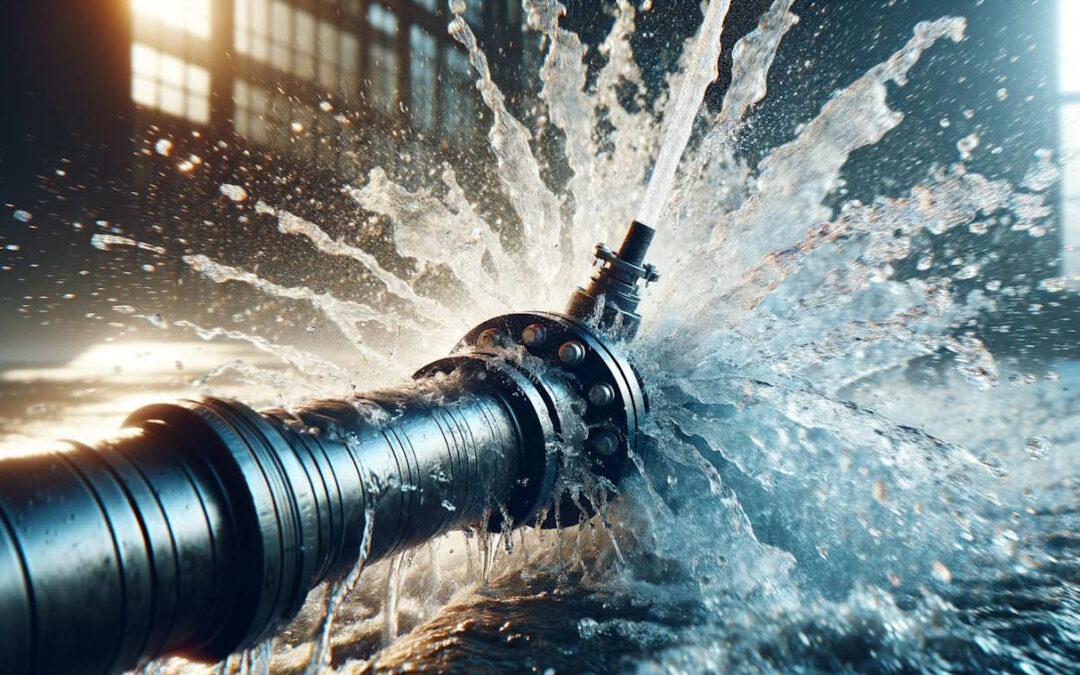Water Leak Detection: How to Identify and Fix Leaks Before They Create Damages
Water Leak Detection: How to Identify and Fix Leaks Before They Create Damages
Blog Article
Innovative Solutions for Very Early Detection of Water Leakages in Structures and Infrastructure
As the integrity of buildings and framework is extremely important, the challenge of very early discovery of water leaks has actually stimulated ingenious services that promise to reinvent the means we protect versus prospective problems. From innovative leak discovery technologies to the implementation of IoT sensors for real-time monitoring, the landscape of leakage prevention is progressing rapidly. Equipment learning algorithms offer a glance into the future of leakage prediction, while thermal imaging provides a non-intrusive method for pinpointing concealed leaks. Automated water circulation evaluation systems are improving exactly how leakages are identified and dealt with, leading the way for a proactive technique to water leakage discovery. Each of these services holds the crucial to making certain the dependability and long life of our developed atmosphere, motivating a change towards a more sustainable and effective future.
Advanced Leakage Discovery Technologies
Advanced leak discovery modern technologies, furnished with sophisticated sensing units and algorithms, play a vital role in quickly determining and identifying water leakages in numerous settings. Electromagnetic sensing units can identify adjustments in electromagnetic areas triggered by water, offering yet one more layer of leak discovery capability.

IoT Sensors for Real-Time Monitoring
In the world of modern water leak detection, the combination of IoT sensing units for real-time tracking represents a pivotal innovation in enhancing positive leakage discovery capacities. These sensors supply constant tracking of water supply, supplying real-time information on water circulation rates, pressure variations, and temperature changes. By leveraging IoT modern technology, these sensing units can find also the tiniest abnormalities in water usage patterns, making it possible for very early recognition of potential leaks before they rise right into significant concerns.
IoT sensing units transmit data to a centralized platform, where sophisticated formulas evaluate the info and produce informs or notifications when abnormalities are discovered. This real-time monitoring capacity enables residential property proprietors or facility managers to quickly deal with leaks, minimizing water damage, decreasing repair service expenses, and saving water resources.
Additionally, IoT sensors can be incorporated with structure administration systems, enabling automated responses to detected leakages, such as closing off water valves or activating pumps to minimize the influence of leakages. Generally, the application of IoT sensors for real-time surveillance dramatically enhances the effectiveness and effectiveness of water leakage discovery in structures and infrastructure.
Machine Understanding Algorithms for Leakage Forecast

One trick benefit of using maker discovering for leak prediction official website is its ability to continually discover and improve its accuracy gradually. As even more information is gathered and fed into the formula, it can fine-tune its predictions and adjust to altering problems, inevitably boosting the reliability of leakage detection systems.
Moreover, equipment discovering algorithms can assist in determining refined indications of leaks that might go unnoticed by typical tracking methods. water leak detection. By examining intricate information collections in real-time, these algorithms can supply early cautions and alerts, permitting prompt intervention and preventative maintenance to minimize potential water damages and associated prices
Utilizing Thermal Imaging for Leak Detection
Thermal imaging technology supplies an appealing strategy for identifying water leaks in different systems and frameworks. By making use of infrared radiation and temperature differences, thermal imaging cams can identify surprise leakages that are not quickly noticeable to the naked eye. When water gets away from pipelines or structures, it often changes the temperature level of the surrounding area, producing temperature level differentials that thermal cams can capture. These temperature abnormalities are then equated right into noticeable images, highlighting the specific location of the leak.
Among the key benefits of thermal imaging for leak detection is its non-intrusive nature. Unlike typical techniques that might need burglarizing wall surfaces or floorings to find leakages, thermal imaging enables for non-destructive screening. This not only conserves time and minimizes prices yet likewise lessens interruption to the structure or framework being evaluated. Furthermore, thermal imaging can rapidly scan large locations, giving a thorough summary of prospective leakage sources in a prompt manner. On the whole, making use of thermal imaging technology improves the effectiveness and accuracy of water leakage discovery, making it an important tool for maintaining the honesty of structures and infrastructures.
Automated Water Circulation Analysis Equipments
How can automated water flow evaluation systems reinvent the detection and management of leakages in different systems and infrastructures? Automated water circulation analysis systems use a proactive approach to leakage detection by constantly monitoring water circulation prices and patterns. By establishing standard information, these systems can swiftly identify inconsistencies that may show a leakage, making it possible for timely useful link treatment to avoid extensive damage.
These systems utilize advanced algorithms to examine real-time data and give immediate notifies when anomalies are identified, enabling for swift activity to be taken. Additionally, computerized water flow analysis more systems can be integrated with structure management systems or IoT systems, boosting general effectiveness and making it possible for remote monitoring abilities.
In addition, the data collected by these systems can be used for predictive maintenance purposes, helping to identify potential powerlessness in the infrastructure prior to leakages occur. In general, the execution of automated water flow evaluation systems can dramatically boost leakage discovery and administration methods, eventually causing cost savings, lowered water wastage, and increased sustainability in buildings and framework.

Verdict
To conclude, the combination of sophisticated leakage detection technologies, IoT sensing units, machine discovering formulas, thermal imaging, and automated water flow analysis systems provides innovative options for very early discovery of water leakages in structures and facilities. These modern technologies make it possible for real-time surveillance, forecast of leakages, and efficient detection methods to stop water damage and wastage. Carrying out these services can aid in maintaining the stability and sustainability of water systems in numerous settings.
Report this page